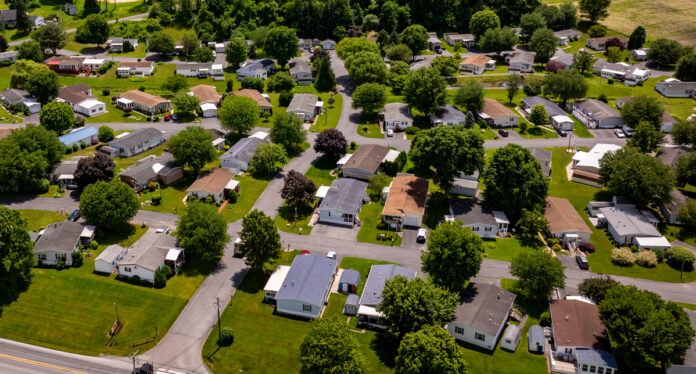
Manufactured home communities are a unique and valuable asset class, offering a steady income stream and long-term appreciation. However, many owners may not be fully aware of the hidden financial benefits their properties can offer.
Cost segregation, a tax strategy that accelerates depreciation and increases cash flow, is particularly effective for this asset class. By understanding how this strategy works and why it applies so well to manufactured housing communities, owners can uncover significant tax savings, offset income, and maximize the value of their investment.
What is Cost Segregation?
Cost segregation is a tax planning tool that allows property owners to reclassify components of their property into shorter depreciation categories. Instead of waiting the typical 27.5 or 39 years to recover costs, components such as land improvements or certain structural features can be depreciated over much shorter periods — Five, seven, or 15 years, for example.
Two key elements enhance the effectiveness of cost segregation:
- Bonus Depreciation: Current tax laws allow a significant portion of qualifying assets to be fully depreciated in the year they are placed in service. For community owners, this means substantial upfront tax savings.
- Accelerated Depreciation: Even without bonus depreciation, reclassifying assets into shorter depreciation schedules can significantly increase annual deductions, improving cash flow year after year.
Why Manufactured Home Communities Are Ideal for Cost Segregation
Land-lease communities are uniquely suited for cost segregation due to their high proportion of shorter-life depreciable assets. Here’s why:
Land Improvements: A significant portion of a community’s value often lies in land improvements, which have a 15-year depreciation schedule. These include infrastructure like roads, sidewalks, driveways, and parking lots — components that make up a substantial part of a community’s value.
Movable Homes: Unlike traditional residential structures, park-owned movable homes can be classified as 5-year assets. Additionally, utility hookups including water, sewer, electrical, as well as items like signage and furnishings, are also categorized as short-life assets, yielding significant first-year tax benefits when combined with bonus depreciation.
Missed Opportunities: Many CPAs mistakenly classify all park assets under longer depreciation schedules, leaving significant tax savings on the table. Proper cost segregation ensures these misclassifications are corrected, unlocking potentially hundreds of thousands of dollars in missed deductions.
Benefits for Small and Large Investors
Cost segregation isn’t a one-size-fits-all strategy. It offers tailored benefits depending on the investor’s profile:
- Smaller Investors: For those filing as individuals or small business owners, cost segregation can offset not only passive income but also active income under certain conditions. This creates an opportunity to reduce personal tax liabilities while increasing available cash flow.
- Institutional Investors: Larger operators with LP investors can leverage cost segregation to enhance cash flow and provide significant tax benefits to their limited partners. This added value can strengthen relationships with investors and boost the property’s overall ROI.
Lookback Studies: Capturing Missed Opportunities
What if your property wasn’t recently purchased? Cost segregation isn’t limited to new acquisitions. Lookback studies allow owners to retroactively capture missed depreciation from previous years without the need to amend previous tax returns. This means that even long-held communities can still benefit from this strategy, often resulting in sizable tax refunds.
Case in Point: A Community in Wichita
To illustrate how cost segregation can create substantial tax savings, let’s examine a real-world example:
In October 2024, a community in Wichita, Kan., was acquired for $1,444,000. The property included 41 homesites. Twenty-three were tenant-owned homes, 15 park-owned homes, and there were three vacant sites. The land was valued at $216,600, leaving the remaining $1,227,400 eligible for depreciation.
Here’s how cost segregation unlocked immediate tax savings for the owner:
- 47 percent (5-year property): Assets like park-owned movable homes, utility hookups and other short-life property components such as signage and certain furnishings.
- 34 percent (15-year property): Land improvements, including roads, sidewalks, driveways, landscaping, and parking areas.
- 19 percent (27.5-year property): Longer-life assets like community buildings, leasing offices, or permanent structures on the property.
Impact of Cost Segregation:
With a cost segregation study and the benefit of 60 percent bonus depreciation, the first-year depreciation deduction totaled $625,532. Without cost segregation, the owner would have been limited to a first-year deduction of just $9,304 under traditional depreciation schedules.
This substantial tax savings provided a significant boost to the owner’s available cash flow, creating opportunities to reinvest in the property, fund other acquisitions, or improve their overall financial flexibility.
Value for Properties of All Sizes, Configurations
Whether the community includes just a few units or is a large-scale operation, cost segregation can deliver significant benefits. Because so much of the property qualifies as depreciable assets — movable homes, infrastructure, and land improvements — the strategy proves valuable across all price points.
For instance, a $500,000 mobile home park could yield proportional tax benefits just as compelling as a $10 million property. The key is understanding how to categorize assets correctly and maximize their depreciation potential.
Consult Your Advisor
By exploring opportunities like lookback studies and properly classifying movable homes and land improvements, owners can make smarter tax decisions that drive long-term profitability. If so, consult with a CPA or tax advisor to evaluate eligibility and ensure the property is maximizing tax savings under current regulations.
Eden Markowitz is a cost segregation expert with Madison Specs. He has a proven track record of helping real estate investors maximize their tax savings through strategic planning. Eden’s deep expertise in accelerated depreciation helps his clients unlock substantial financial benefits. His commitment to delivering outstanding results and maintaining strong client relationships underscores his role as a trusted advisor in the real estate industry.
MHInsider is the leader in manufactured housing news and is a product of MHVillage, the top marketplace for manufactured homes.










